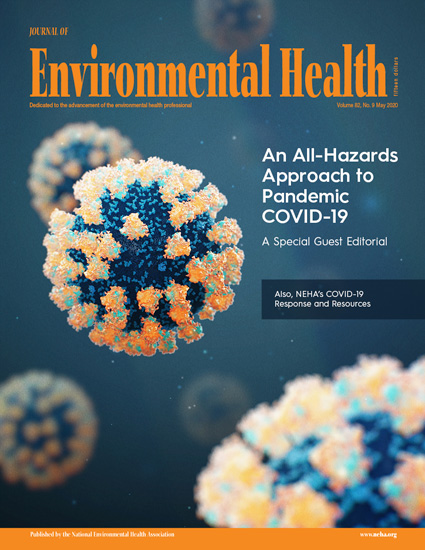基于居住地址的室外空气污染暴露评估是否会导致流行病学研究出现偏差?
IF 5.3
2区 环境科学与生态学
Q1 ENVIRONMENTAL SCIENCES
引用次数: 0
摘要
关于长期暴露于室外空气污染的流行病学研究一直记录着与发病率和死亡率的关系。在这些流行病学研究中,空气污染暴露通常是在居住地址进行评估的,因为在大型流行病学研究中很少知道个人的时间活动模式。忽略时间活动模式可能会导致流行病学研究出现偏差。本文旨在评估按居住地址评估的暴露量与按时间活动综合估计的暴露量之间的一致性,以及按居住地址估计暴露量时流行病学研究的潜在偏差。我们回顾了比较住址暴露和时间活动综合暴露的暴露研究,重点关注两者之间的相关性。我们进一步讨论了比较居住地暴露和时间活动综合暴露的健康影响估计值的流行病学研究,以及间接估计流行病学研究中因忽略时间活动模式而导致的健康影响估计值潜在偏差的研究。大量研究对居住地暴露和时间活动综合暴露进行了比较,特别是在欧洲和北美,主要集中在水平差异上。这些研究中有 11 项报告了相关性,表明基于居住地址的长期空气污染暴露与基于时间活动的长期空气污染综合暴露之间的相关性通常很高甚至非常高(R > 0.8)。对于单个受试者而言,住宅暴露量与时间活动综合暴露量之间存在巨大差异。与高相关性相一致的是,在已确定的六项流行病学研究中,有五项研究发现,住宅和时间活动综合暴露对健康的影响几乎相同。另外六项在欧洲和北美进行的研究显示,使用基于居住地的暴露量估算暴露反应函数时,仅存在小到中等程度的潜在偏差(9% 到 30% 的潜在低估)。平均暴露水平的差异一般较小,而且是双向的。在几乎所有研究中,时间-活动综合暴露的暴露对比都较小。暴露量的差异在人群中的分布不均,包括不同社会经济群体之间的差异。总体而言,在与对比研究中评估的人群相当的情况下,流行病学研究中与仅评估居住地址的长期暴露相关的偏差可能较小。进一步改进暴露评估,尤其是对大量人群的暴露评估,仍然是有益的。本文章由计算机程序翻译,如有差异,请以英文原文为准。
Does residential address-based exposure assessment for outdoor air pollution lead to bias in epidemiological studies?
Epidemiological studies of long-term exposure to outdoor air pollution have consistently documented associations with morbidity and mortality. Air pollution exposure in these epidemiological studies is generally assessed at the residential address, because individual time-activity patterns are seldom known in large epidemiological studies. Ignoring time-activity patterns may result in bias in epidemiological studies. The aims of this paper are to assess the agreement between exposure assessed at the residential address and exposures estimated with time-activity integrated and the potential bias in epidemiological studies when exposure is estimated at the residential address. We reviewed exposure studies that have compared residential and time-activity integrated exposures, with a focus on the correlation. We further discuss epidemiological studies that have compared health effect estimates between the residential and time-activity integrated exposure and studies that have indirectly estimated the potential bias in health effect estimates in epidemiological studies related to ignoring time-activity patterns. A large number of studies compared residential and time-activity integrated exposure, especially in Europe and North America, mostly focusing on differences in level. Eleven of these studies reported correlations, showing that the correlation between residential address-based and time-activity integrated long-term air pollution exposure was generally high to very high (R > 0.8). For individual subjects large differences were found between residential and time-activity integrated exposures. Consistent with the high correlation, five of six identified epidemiological studies found nearly identical health effects using residential and time-activity integrated exposure. Six additional studies in Europe and North America showed only small to moderate potential bias (9 to 30% potential underestimation) in estimated exposure response functions using residence-based exposures. Differences of average exposure level were generally small and in both directions. Exposure contrasts were smaller for time-activity integrated exposures in nearly all studies. The difference in exposure was not equally distributed across the population including between different socio-economic groups. Overall, the bias in epidemiological studies related to assessing long-term exposure at the residential address only is likely small in populations comparable to those evaluated in the comparison studies. Further improvements in exposure assessment especially for large populations remain useful.
求助全文
通过发布文献求助,成功后即可免费获取论文全文。
去求助
来源期刊

Environmental Health
环境科学-公共卫生、环境卫生与职业卫生
CiteScore
10.10
自引率
1.70%
发文量
115
审稿时长
3.0 months
期刊介绍:
Environmental Health publishes manuscripts on all aspects of environmental and occupational medicine and related studies in toxicology and epidemiology.
Environmental Health is aimed at scientists and practitioners in all areas of environmental science where human health and well-being are involved, either directly or indirectly. Environmental Health is a public health journal serving the public health community and scientists working on matters of public health interest and importance pertaining to the environment.
 求助内容:
求助内容: 应助结果提醒方式:
应助结果提醒方式:


